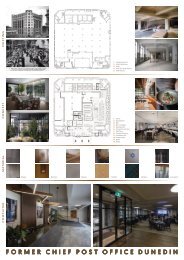You also want an ePaper? Increase the reach of your titles
YUMPU automatically turns print PDFs into web optimized ePapers that Google loves.
Note
Elbow
The systematic scanning technique described below is only theoretical, considering the
fact that the examination of the elbow is, for the most, focused to one quadrant only of the
joint based on clinical findings.
1
For examination of the anterior elbow, the patient
is seated facing the examiner with the elbow in an
extension position over the table. The patient is
asked to extend the elbow and supinate the forearm.
A slight bending of the patient’s body toward
the examined side makes full supination and assessment
of the anterior compartment easier. Full
elbow extension can be obtained by placing a
pillow under the joint.
*
*
Transverse US images are first obtained by
sweeping the probe from approximately 5cm
above to 5cm below the trochlea-ulna joint,
perpendicular to the humeral shaft. Cranial US
images of the supracondylar region reveal the
superficial biceps and the deep brachialis muscles.
Alongside and medial to these muscles,
follow the brachial artery and the median nerve:
the nerve lies medially to the artery.
Legend: a, brachial artery; arrow, median nerve; arrowheads,
distal biceps tendon; asterisks, articular cartilage of the
humeral trochlea; Br, brachialis muscle; Pr, pronator muscle
2
The distal biceps tendon is examined while keeping the
patient’s forearm in maximal supination to bring the
tendon insertion on the radial tuberosity into view. Because
of an oblique course from surface to depth, portions
of this tendon may appear artifactually hypoechoic
if the probe is not maintained parallel to it. Accordingly,
the distal half of the probe must be gently pushed
against the patient’s skin to ensure parallelism between
the US beam and the distal biceps tendon thus allowing
adequate visualization of its fibrillar pattern.
1
















